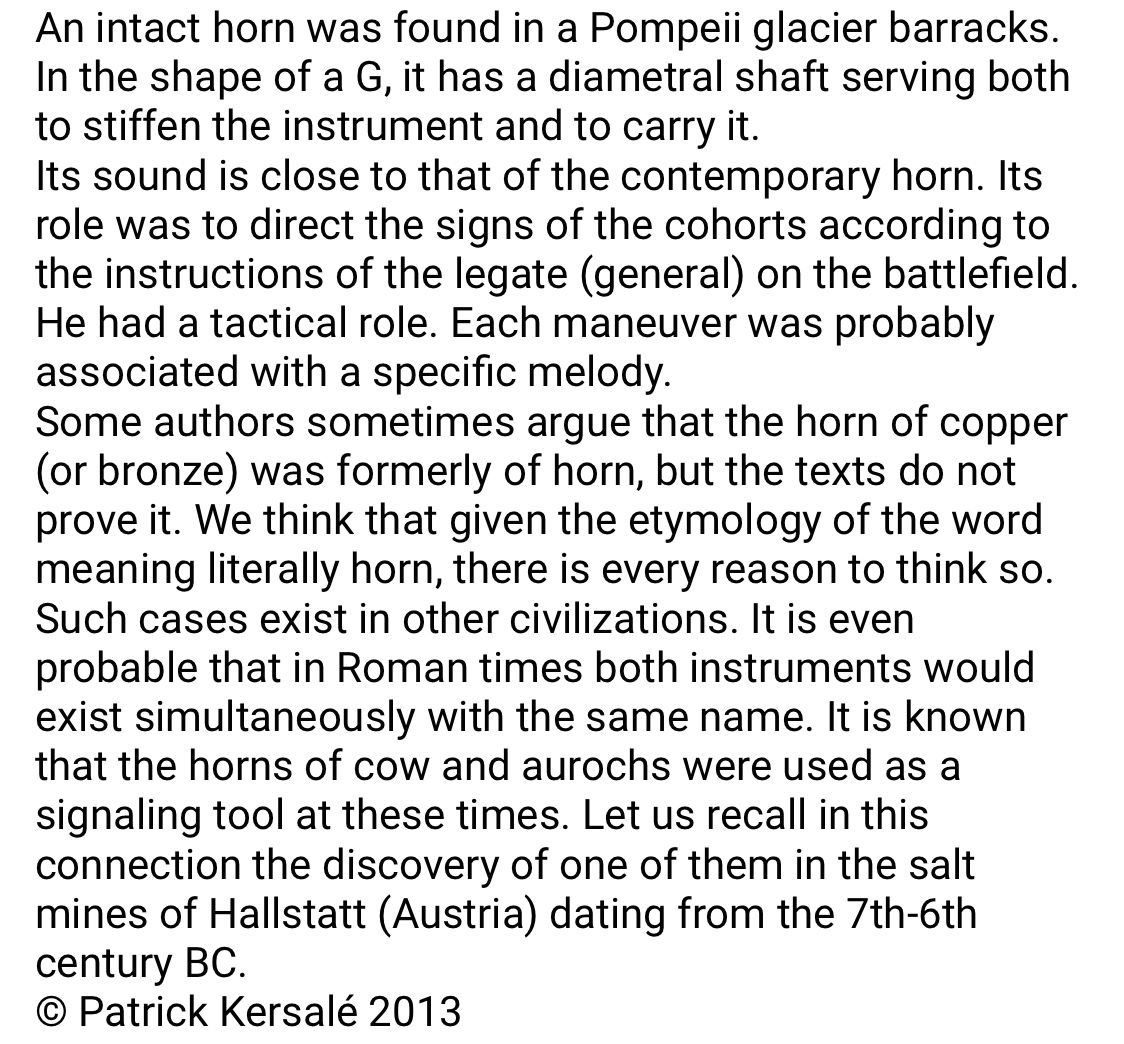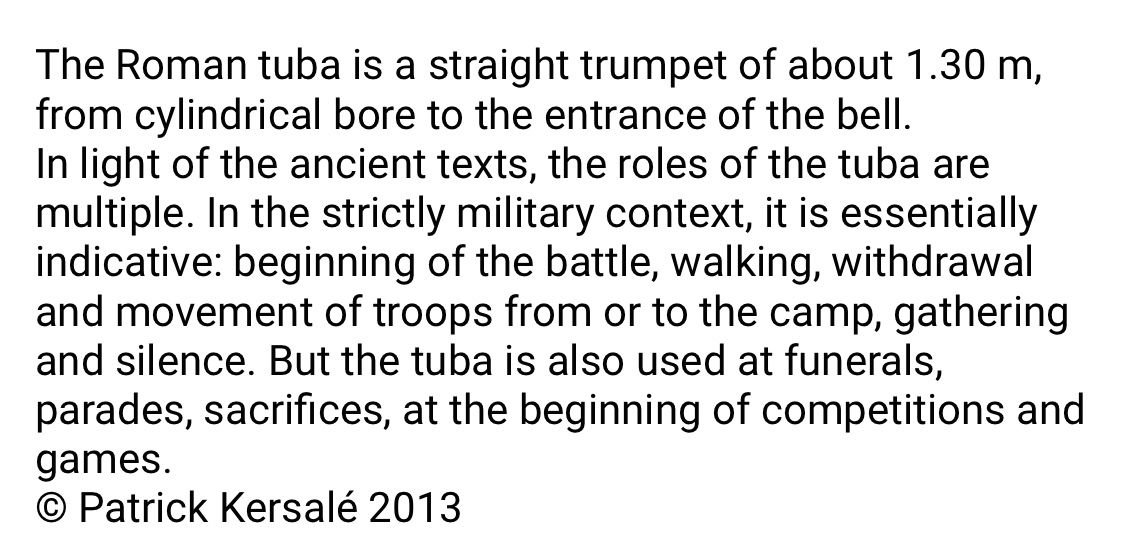The Trumpets of Ancient Rome
-
Cornu de Pompeii

-
The Buccina
The buccina was similar to the cornu, except that it had a slightly smaller bore and a more flared bell opening at the end. The buccina was used to signal changes of watch during the night, wake up calls and for announcing mealtimes. Buccina players were not as high ranking as the soldiers who played tuba/trumpet or cornu - in addition to their musical responsibilities they also had to dig graves and cut wood.
-
The Roman Tuba
The most important musical instrument in the Roman Military was the tuba or straight trumpet. The tuba/trumpet was usually made from copper or iron and was a conical bore straight tube about 120-140 cm in length and came in three pieces with a mouthpiece. The tuba/trumpet was used at sacrfices, processions, triumphal processions and funerals. However, it was primarily used to announce troop movements during battle, and it was intended to be played a loudly as possible. Julius Caesar is reported to have used trumpets to withdraw his troops from battle, and his Gaulish opponent Vercingetorix also used it.

-
The Roman Lituus
The ancient lituus was an Etruscan high-pitched brass instrument, which was straight but bent at the end, in the shape of a letter J, similar to the Gallic carnyx. It was later used by the Romans, especially for processional music and as a signalling horn in the army.
This link is another video:
Youtube Video -
Very interesting! Those brought to mind this video of Egyptian trumpets being played. Authentic, slightly haunting sound - nothing like those old Hollywood movies.

-
@dale-proctor said in The Trumpets of Ancient Rome:
Very interesting! Those brought to mind this video of Egyptian trumpets being played. Authentic, slightly haunting sound - nothing like those old Hollywood movies.

You always have to bear in mind that the sound of the Egyptian instrument is the sound of an actual ancient piece, whereas all the others are more or less exact modern copies (as far as I know, these reproductions took no notice of the exact metallurgy of the originals, but just followed the shape).